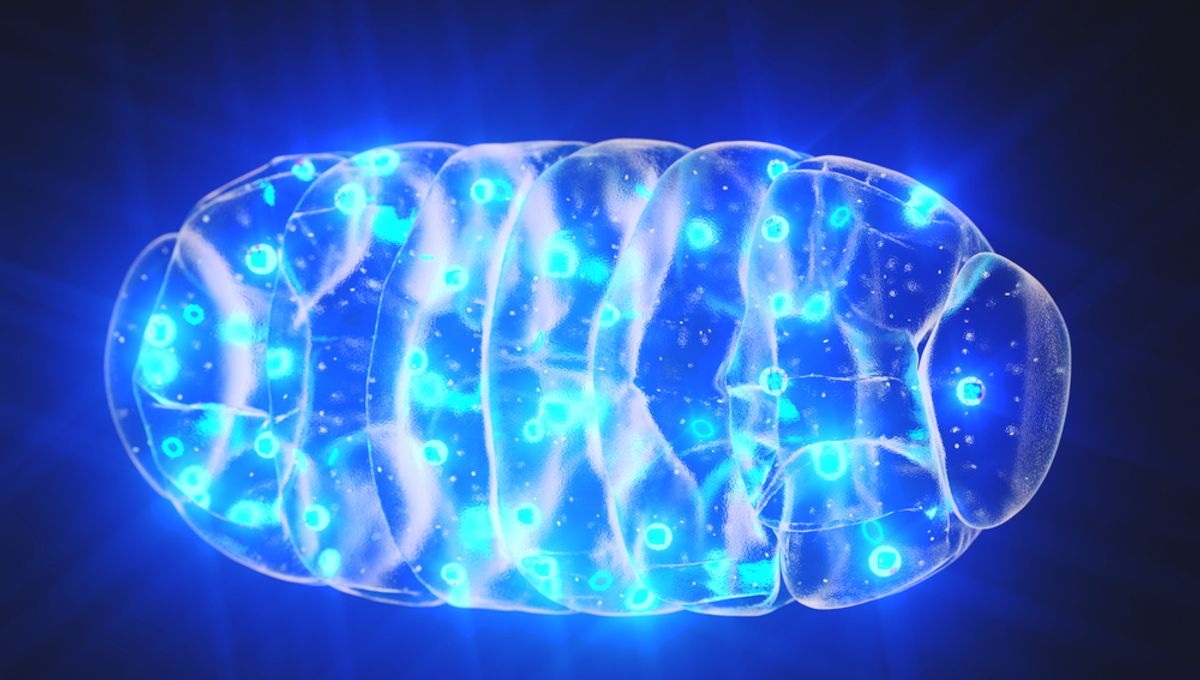
Caenorhabditis elegans, the humble roundworm that has taught us so much about genetics, has been given an upgrade. A team at the University of Rochester modified some C. elegans so their mitochondria can harvest light to produce more energy. In a finding probably coming to superhero films any day now, the modified worms were more energetic and aged more slowly.
The mitochondria within our cells are known as the bodies’ power plants for their production of adenosine triphosphate (ATP), which stores energy for the rest of the cell to release. Mitochondria, however, do not make this energy: instead, they transform it from glucose produced by plants.
With some bizarre exceptions, animals have outsourced the primary production of chemical energy to plants and bacteria, but maybe that was a mistake. Dr Brandon Berry previously described inserting a proton pump from a fungus in roundworms’ mitochondria. Now, in Nature Aging, Berry and co-authors report that the roundworms appear to benefit from the process.
“This study found that simply boosting metabolism using light-powered mitochondria gave worms longer, healthier lives,” senior author Dr Andrew Wojtovich said in a statement. The authors aren’t planning to genetically engineer people to run on sunlight, or even release a race of superpowered roundworms, but they do believe the work could shed light (sorry) on diseases of aging, which are often associated with mitochondrial decline.
The work is an advanced form of optogenetics – the process of modifying cells so they respond to light. Optogenetics is an increasingly common tool for identifying specific cells’ roles, allowing researchers to see how organisms respond when a small group of cells is activated.
The team found that the modified cells not only activated in response to light, but they also used the energy falling on them to make positively charged ions move across the mitochondria’s inner membrane. When the pump was activated in early adulthood, the modified mitochondria produced more ATP, leading to 30-40 percent longer lives for the roundworms exposed to sufficiently bright light. Older modified worms also remained more active in liquids, but curiously not on solid surfaces.
“Mitochondria are similar to industrial power plants in that they combust a source of carbon, primarily glucose, to produce useful energy for the cell,” Berry said. Coal, after all, is formed from vegetation that evaded being eaten. “What we have done is essentially hooked up a solar panel to the existing power plant infrastructure,” Berry continued.
Berry’s roundworms have not fulfilled breatharians’ dreams and gone 100 percent solar just yet, but exposure to sunlight certainly leads to additional production, and the cells benefit. That alone tells us that decreased ATP production capacity is a cause, not just a consequence, of age-related decline. The authors hope the capacity to manipulate mitochondria in this way will lead to further insights.
“We need to understand more about how mitochondria truly behave in an animal,” Berry said. “First in worms…but then in human cells in culture and in rodents.”
Anyone fearing the souped-up roundworms will escape the lab and conquer the Earth should note that C. elegans are soil dwellers who won’t get enough sunlight in the wild to benefit greatly.
Instead, the most likely outcome will be better ways to target diseases with suspected mitochondrial contributions like Parkinson’s and diabetes. Still, you must admit a team of super-soldiers unstoppable by anything other than night or cloud would be cool.
The research is open access in Nature Aging.
Source Link: Light-Powered Mitochondria Extend Worm’s Lives And Improve Their Energy Levels